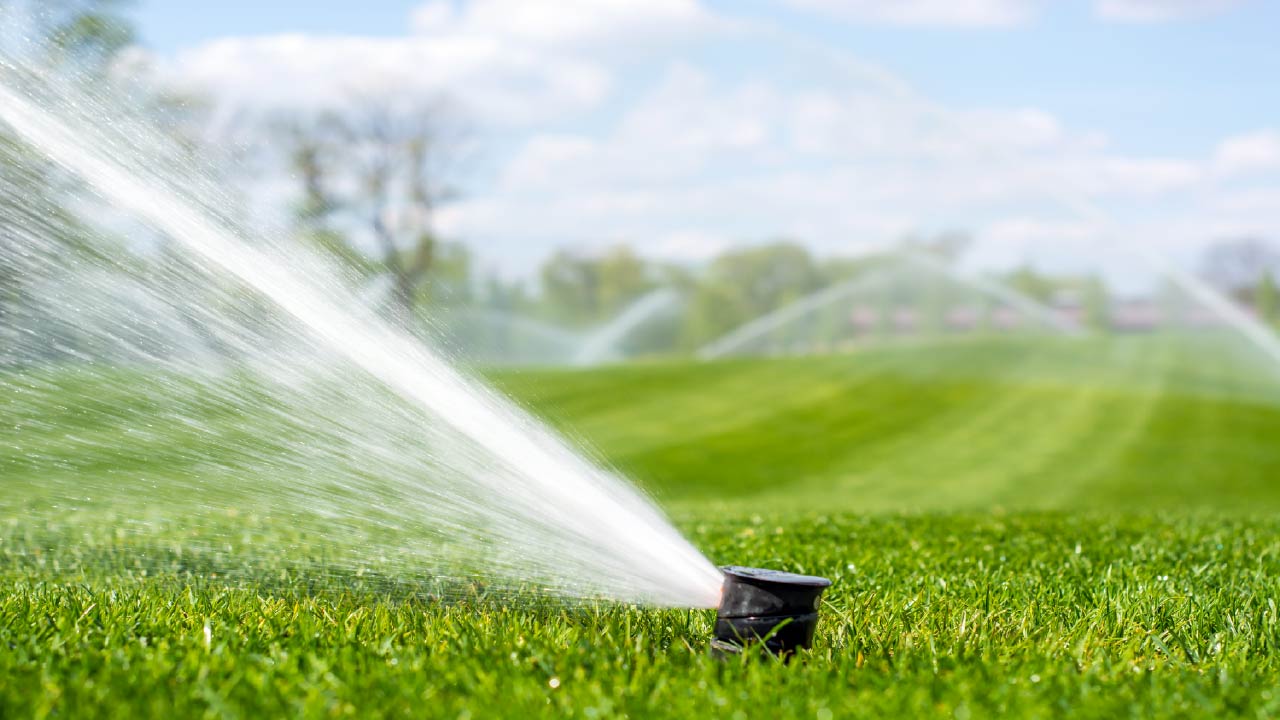Sprinkler System: 5 Things to Maintain a Proper Working System
Apr 30th 2025
Irrigation system maintenance is necessary to maintain efficient water application. Like all irrigation systems, a sprinkler system requires regular maintenance to perform well. Failure to maintain your system might affect its performance and lifespan. If you keep your irrigation system in excellent condition, it will repay you with years of optimal watering that saves both water and money.
You can take numerous steps to increase your sprinkler system's effectiveness and longevity. Let's look at five things to do to maintain a proper working sprinkler system.
1. Set a Right Watering Schedule
The first tip is to measure the appropriate watering time. A correct lawn watering schedule ensures you do not over- or underuse your sprinklers. Watering the lawn in the early morning or evening is best, avoiding the hot part of the day.
A healthy lawn typically needs one inch of water every week or slightly more in summer, depending on where you live. You should water 3-4 days per week in summer. An efficient sprinkler system can supply this amount of water in 15 minutes, but it's best to monitor your sprinkler system.
Flush the System
Flush the irrigation system at the start of the season to avoid clogging. Otherwise, dirt and debris will enter the system and block the nozzles. Even normal wear and tear or a contaminated water source might block the nozzles. In addition to flushing the system, you should install a filter all sprinkler systems and replace any clogged nozzles.
2. Program Your Sprinkler System Correctly
Adjust your watering schedule according to the season. Your lawn needs less water in the spring than in the summer. For example, when temperatures drop in the fall, you should program your irrigation system to water less or less frequently.
In addition, different parts of your lawn will require different amounts of water. If a certain area of the lawn is shaded, it takes half the amount of water as the sunny area. Adjust your sprinklers according to how much water each area requires.
Install Rain Sensor
Consider installing a rain sensor to save water and money. When the rain starts, the sensor will automatically turn off your irrigation system immediately to avoid water wastage. Most timers have rain sensor capabilities, which makes them easy and convenient.
3. Take Care of Sprinkler Heads
Sprinkler heads can accumulate residue over time, which can cause clogging, malfunctioning, or misalignment. This can cause misdirected water spray, which might spray your pathway instead of your lawn. Don't think that your sprinklers will perform perfectly. Their chance of breaking increases over time. Sprinklers could leak due to a loose fitting or damage from lawnmowers, soil shifting, poor installation, and normal wear and tear. A complete inspection will help you spot such problems.
Sometimes, the sprinklers are completely clogged, meaning no water will leave the sprinkler. This problem can cause unnecessary strain on your irrigation system and cost you money. Properly maintaining your sprinkler system involves replacing broken or missing heads before watering.
4.Check Irrigation Zones for Leaks and Fix
Inspect your entire sprinkler system for leaks and broken lines. Leaks can waste water and money. If one area in your lawn is dry and another has puddles, it could be due to a leak or misaligned sprinkler heads. If you notice any leaks in pipes or broken sprinkler heads, fix the damage immediately.
If your sprinklers are pointed at an object blocking the yard, such as a tree, you'll need to re-adjust the direction of the sprinklers to water the areas you want.
5. Routine Inspection to Diagnose Problems and Fix Them
Spring and fall inspections once a season aren't enough. Closely check your irrigation system at least twice a season. The first check should be performed at the start of the season when you are about to activate the irrigation system. The second checkup should occur midway through the season. However, we recommend checking your sprinkler system once a month to ensure everything is working perfectly.
Inspect all sprinkler heads and test your zone for damage. Make sure the controller is working and update the controller settings for the summer weather.
The Bottom Line
Proper and consistent maintenance of your sprinkler system is essential for maintaining a lush-looking lawn in the hot season and at other times of the year. Even something as little as a misaligned sprinkler can result in overwatering or ugly brown areas in your landscape. Therefore, a thorough inspection of your entire irrigation system when the weather starts getting warmer is recommended due to the wear and tear it has likely experienced during the winter.
Follow our sprinkler system maintenance tips above to make your yard life easier and enjoy a well-watered lawn without worrying about it.

